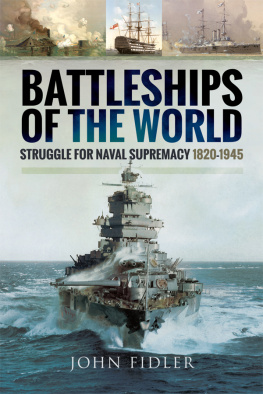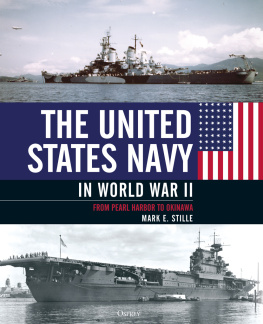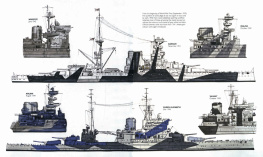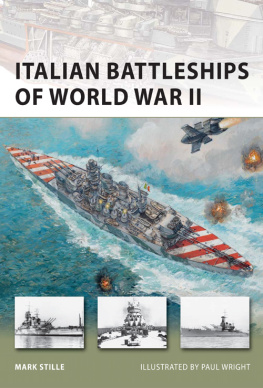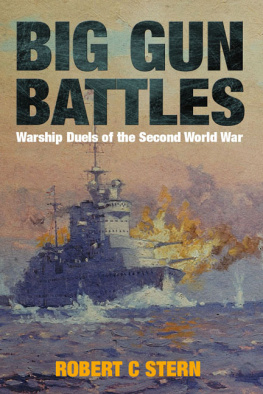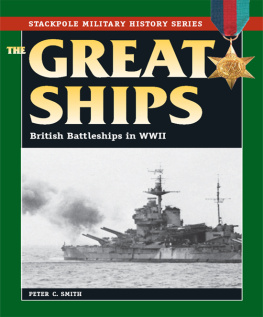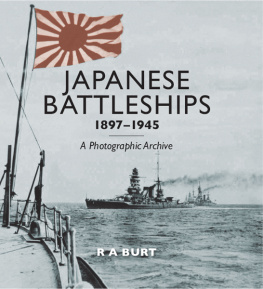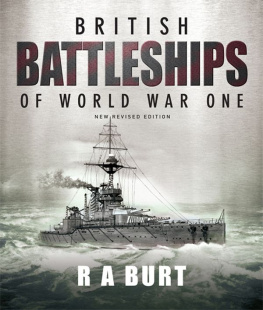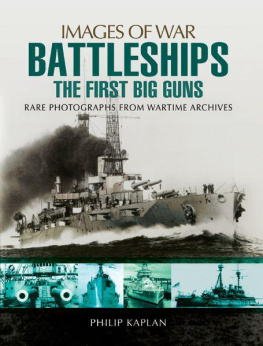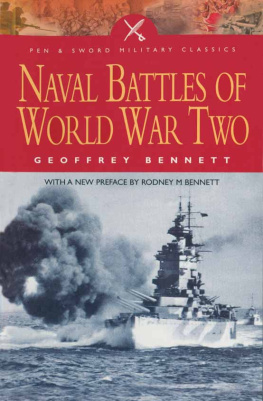Fidler - Battleships of the world: struggle for naval supremacy 1820-1945
Here you can read online Fidler - Battleships of the world: struggle for naval supremacy 1820-1945 full text of the book (entire story) in english for free. Download pdf and epub, get meaning, cover and reviews about this ebook. City: Barnsley, year: 2016, publisher: Casemate Pub & Book Dist Llc;Pen & Sword Naval, genre: History. Description of the work, (preface) as well as reviews are available. Best literature library LitArk.com created for fans of good reading and offers a wide selection of genres:
Romance novel
Science fiction
Adventure
Detective
Science
History
Home and family
Prose
Art
Politics
Computer
Non-fiction
Religion
Business
Children
Humor
Choose a favorite category and find really read worthwhile books. Enjoy immersion in the world of imagination, feel the emotions of the characters or learn something new for yourself, make an fascinating discovery.
Battleships of the world: struggle for naval supremacy 1820-1945: summary, description and annotation
We offer to read an annotation, description, summary or preface (depends on what the author of the book "Battleships of the world: struggle for naval supremacy 1820-1945" wrote himself). If you haven't found the necessary information about the book — write in the comments, we will try to find it.
Fidler: author's other books
Who wrote Battleships of the world: struggle for naval supremacy 1820-1945? Find out the surname, the name of the author of the book and a list of all author's works by series.
Battleships of the world: struggle for naval supremacy 1820-1945 — read online for free the complete book (whole text) full work
Below is the text of the book, divided by pages. System saving the place of the last page read, allows you to conveniently read the book "Battleships of the world: struggle for naval supremacy 1820-1945" online for free, without having to search again every time where you left off. Put a bookmark, and you can go to the page where you finished reading at any time.
Font size:
Interval:
Bookmark:

Battleships of the World
The early research for this book was carried out while I held a Schoolmaster Fellowship at St Martins College, Lancaster (now the University of Cumbria).
My thanks go to the Governors of the College, and of Lancaster Royal Grammar School, for enabling me to do this.
Struggle for Naval Supremacy 18201945
John Fidler

First published in Great Britain in 2016 by
Pen & Sword Maritime
an imprint of
Pen & Sword Books Ltd
47 Church Street
Barnsley
South Yorkshire
S70 2AS
Copyright John Fidler 2016
ISBN 978 1 47387 146 5
eISBN 978 1 47387 148 9
Mobi ISBN 978 1 47387 147 2
The right of John Fidler to be identified as the Author of this Work has been asserted by him in accordance with the Copyright, Designs and Patents Act 1988.
A CIP catalogue record for this book is available from the British Library
All rights reserved. No part of this book may be reproduced or transmitted in any form or by any means, electronic or mechanical including photocopying, recording or by any information storage and retrieval system, without permission from the Publisher in writing.
Pen & Sword Books Ltd incorporates the imprints of Pen & Sword Archaeology, Atlas, Aviation, Battleground, Discovery, Family History, History, Maritime, Military, Naval, Politics, Railways, Select, Transport, True Crime, and Fiction, Frontline Books, Leo Cooper, Praetorian Press, Seaforth Publishing and Wharncliffe.
For a complete list of Pen & Sword titles please contact
PEN & SWORD BOOKS LIMITED
47 Church Street, Barnsley, South Yorkshire, S70 2AS, England
E-mail:
Website: www.pen-and-sword.co.uk
T he battle squadrons of the Royal Navy, assembled at Spithead for the Naval Review of 1914, epitomised the armoured battleship at the height of its prestige. The long columns of majestic vessels represented Britains long-held mastery of the sea which had enabled the building of an empire, the defeat of Napoleon and the commercial supremacy of the past century.
The very names of the ships emphasised the traditions of the service: Ajax, Neptune, Conqueror, Orion, Colossus and Thunderer were all named after ships which had fought in the battle line at Trafalgar. An Audacious had fought at Aboukir Bay (the Battle of the Nile), where a Vanguard had been Nelsons flagship, while another Vanguard and a Hercules had fought the Armada. There had been a Monarch at Copenhagen, a Superb at Algeciras. A Centurion had been Ansons flagship for his epic voyage around the world and a Bellerophon had seen the surrender of Napoleon.
Now all of these names were borne by massive armoured ships, armed with guns of at least 12-inch calibre, any one of which could have reduced to matchwood an entire fleet of Nelsons day. Among vessels nearing completion were a Royal Sovereign , a Warspite and a Revenge , inheritors of some of the most famous names, while the most famous of all Victory , launched in 1765, was then still afloat in Portsmouth harbour.
Dreadnought herself was named after a ship which had been in Drakes squadron in Cadiz in 1587 and in Howards fleet in the Channel the following year. A second ship of the name had fought in the Dutch wars of the seventeenth century, a third against the French at Barfleur and Cape Passaro. Yet another had been Collingwoods flagship in the blockade of Cadiz in 1805 and had fought at Trafalgar. Now the name was given to a new generation of fast, powerful armoured battleships. In 1914 the expectation was that the great issues of the war at sea would still be decided, as they had been for some four centuries, by the battle fleets. That certainty was shaken by the inconclusive nature of the gun duel at Jutland and by the vulnerability of the great ships to mine and torpedo. Finally, it was to be shattered by the aircraft which wrought such destruction at Taranto and Pearl Harbor, which sank Force Z and eventually overwhelmed the Japanese leviathans Yamato and Musashi . By 1945 it was clear that the end of the battleship era had come and the great ships, which were scrapped in the aftermath of the Second World War, were not replaced.

HMS Victory , afloat in Portsmouth harbour.
T he great three-decked ships of the line of the early nineteenth century were still in the direct line of development from the Revenge of 1577. The Royal Sovereign of 1642, the Victory of 1765 and the 120-gun Caledonia of 1808, despite the technical improvements in ship design, all had essential features in common. They were wooden-built, dependent on wind and sail, and were armed with broadside-mounted, muzzle loading guns firing solid shot. The revolution in ship design in the mid-nineteenth century saw the advent of iron and steel construction and armour, steam power and turretmounted breech-loading guns firing explosive shells. All of these innovations were greeted with a good deal of caution, and each posed considerable technical problems, but in total they transformed the worlds fighting navies in a generation.
Although steam power conferred the immense advantage of independence from the wind, it suffered from massive drawbacks. Engines were prone to breaking down in the early years. Aboard a wooden warship even the galley fire was a hazard and boiler rooms seemed terribly vulnerable to gunfire; paddle wheels were similarly vulnerable and even more exposed. Moreover the rate of consumption of coal meant that no vessel intended for the open sea could be solely dependent on her engines. However, by the 1820s, the navies of France, Britain and the USA were among those using steam paddle tugs for harbour work. Experiments with the far more efficient screw propeller were made in the following decades, with the Americans launching the first screw warship in 1843, the 10-gun sloop Princeton . Two years later the Admiralty staged the famous duel in which the screw sloop Rattler was lashed stern to stern with the paddle steamer Alecto , of similar size and power, in a tug-of-war. Alecto suffered the indignity of being dragged backwards, while at full power, at almost three knots.

The duel between Rattler and Alecto .
The screw frigate Ajax was the first of a series of warships to be built as a result and by 1850 screw propulsion was being applied to firstrates, the 90-gun Agamemnon among them, while existing ships were converted to steam.
However, for the next twenty years steam was regarded as providing auxiliary power only and a full sailing rig was an essential part of any warship. Moreover, an emphasis on sail-drill and seamanship as the priority, at times hindered development.
The use of the explosive shell was not unknown in naval warfare in the eighteenth century. The ungainly bomb-ketches of the time mounted one or two mortars amidships, the whole vessel having to be aligned in the direction of fire. The explosive was detonated by a fuse of slow match, lit before the propellant charge of gunpowder was fired. This was not only a hazardous operation aboard a wooden ship, but the rate of burning of the fuse was unreliable. Resulting accidents suggested that the shell was not really suited to naval warfare until, in 1824, the invention of a French artillery officer solved the problem. Colonel Henri-Joseph Paixhans tested a shell-firing gun in which the fuse of the shell was lit by the flash of the propellant, so that until the gun was fired, the shell was safe.
Font size:
Interval:
Bookmark:
Similar books «Battleships of the world: struggle for naval supremacy 1820-1945»
Look at similar books to Battleships of the world: struggle for naval supremacy 1820-1945. We have selected literature similar in name and meaning in the hope of providing readers with more options to find new, interesting, not yet read works.
Discussion, reviews of the book Battleships of the world: struggle for naval supremacy 1820-1945 and just readers' own opinions. Leave your comments, write what you think about the work, its meaning or the main characters. Specify what exactly you liked and what you didn't like, and why you think so.

